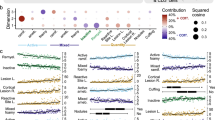Abstract
The human major histocompatibility complex (MHC) class I allele HLA-B27 bears a striking association with the spondylolarthritic group of inflammatory arthritides, yet despite extensive studies its role in the disease process remains obscure. As an MHC class I protein, the primary function of HLA-B27 is to complex with β2-microglobulin forming a structure that presents short antigenic peptides for recognition by cytotoxic T lymphocytes (CTL). It has been proposed that the role of HLA-B27 in spondyloarthropathy involves this process of antigen presentation, and of the numerous theories proposed to explain the association, the most popular have involved the binding and presentation of "arthritogenic" peptides. Transgenic rodent studies directly implicate HLA-B27 heavy chains in disease pathogenesis, but suggest that the mechanism may be distinct from their primary function. The recent demonstration that HLA-B27 heavy chains can form stable homodimers may thus be of relevance. This review summarizes the evidence supporting current theories of disease association and proposes an alternative model of disease based on recent findings.
Similar content being viewed by others
Author information
Authors and Affiliations
Rights and permissions
About this article
Cite this article
Allen, R., Bowness, P. & McMichael, A. The role of HLA-B27 in spondyloarthritis. Immunogenetics 50, 220–227 (1999). https://doi.org/10.1007/s002510050596
Issue Date:
DOI: https://doi.org/10.1007/s002510050596




